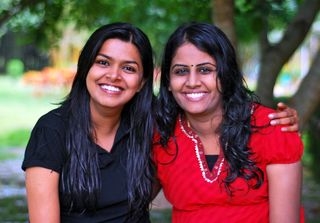Marriage
How Do Indian Women Fare In An Arranged Marriage?
The newest available data paints a rather gloomy picture & offers few solutions.
Posted December 15, 2015
In a recent blog post, I wondered why so many Indian arranged marriages are successful. I based the discussion on my observation that even in a rapidly modernizing India, most educated, upper-class Indians, men and women, prefer to marry in the traditional way, with significant parental involvement and minimal courtship, when selecting mates. Many readers pointed out that this was a rather narrow and naïve view of arranged marriages in India. According to them, the truth is a lot darker. What applies to empowered, educated Indian women does not apply to poor, illiterate, rural women that comprise the vast majority. That is a fair point.
In this post, I want to consider arranged marriage outcomes for a broader pool of Indian women. I will limit my discussion to women because as we will see, Indian women are by far the more vulnerable party in a marriage, whether it is fully arranged, free-choice, or somewhere in between.
Let’s start with a proper definition of arranged marriage1. For our purposes, it is a marriage in which the woman’s parents or older family members play a significant role in selecting a mate for her and finalizing wedding arrangements including the provision of dowry2. What does recent research have to say about arranged marriages of Indian women?
The North-South Divide & Fully Arranged Vs. Semi-Arranged Marriages
Within India, there are significant differences in marriage customs between the economically advanced southern and western states such as Tamil Nadu and Maharashtra, and the less developed northern states such as Bihar and Jharkhand3. In one large study of close to 14,000 young married women4, a vast majority or 91% of Northern women got “fully” arranged marriages. They had no voice whatsoever in selecting their husbands. Their parents and elders chose for them and they had to cooperate and marry a stranger without any prior interaction or knowledge of their soon-to-be-spouse. In these marriages, grooms from the same caste and religion are considered and the bride’s parents weigh his education, profession, social and economic standing with their ability to afford the corresponding dowry amount5. In contrast, in the economically advanced states, close to 50% of the women had at least some say in selecting their husband, engaged in supervised courtship, or chose their mate themselves. Not surprisingly, the less educated, poorer, and rural Indian women are the ones that are subjected to a fully arranged marriage, usually before they have turned 18.
Does participation in selecting a husband lead to better outcomes?

Where longer-term outcomes are concerned, the data indicate that getting a fully arranged marriage has terrible consequences for a poor, rural Indian woman. Compared to a free-choice or a semi-arranged marriage both of which are extremely rare in poor and rural India, even years later, getting a fully arranged marriage is associated with lower levels of communication with the husband on such things as how to spend the household’s money and when to have children6. These women also have significantly lower autonomy on mobility like traveling outside one’s neighborhood or making decisions about household purchases. But it is not clear to me how much of this has to do with the method of marriage vs. other social factors.
Indian Married Women & Physical and Sexual Violence
Now here is the really bad news. In one recent study, the authors found that regardless of how they got married or their economic or educational status, fully 45.5% of all Indian women experienced some form of physical or sexual violence from their husbands after marriage7. Those who got a semi-arranged marriage were less likely (34.8%) to have experienced sexual violence than those who got a fully-arranged marriage (49.4%)8. Another study using a larger sample of 28,000+ married women from the 2007 National Family Health Survey data reported that 35% of women had suffered such intimate partner violence. Across the studies, these numbers are shockingly high. If you are an Indian woman, there is a 1 in 3 chance that your husband will physically or sexually assault you after marriage. Choosing your husband yourself only slightly reduces this chance. What is more, being assaulted by the husband is associated with an increased likelihood that you will get infected with the HIV virus9.
Having a Sister Has Insidious Effects On the Woman's Future
Indian tradition dictates that if one has two or more daughters, the oldest one has to marry first, then the next oldest, and so on. Additionally, once you leave the upper class, the marriage age for women falls off a cliff. For example, even today, between half and two thirds of all young Indian women are married before they turn 18. On the other hand, if you haven’t married by the age of 25 and don’t live in a big city, your chance of marrying is close to zero10. These unwritten rules have harsh consequences for both older and younger siblings.

A recent study11 by economist Tom Vogl used data from close to 150,000 South Asian12 families to study the effects of having a sister on arranged marriage outcomes. With meticulous analysis, Vogl found that in multi-daughter families, parents rushed to marry the older sister off quickly so that her younger sister(s) could be married before her marriage window shut down. This rush led to two outcomes: (1) the older sister attained a lower level of education and (2) she married a man with lower education, occupational, and economic status, when compared to women without sisters. Younger sisters did not do so well either. Their marriage was delayed and they ended up marrying a lower-quality man than they would have in the absence of an older sister. The pernicious effects of arranged marriage are amplified for Indian women who have sisters.
If Arranged Marriage is This Bad, How Else Can Poor, Rural Indian Women Marry?
Relatively speaking, while it is better to play a role in choosing one’s husband, the news from these studies is rather dismal for all women in present-day India. Over half of them will marry before they turn 18, and close to half of them will be physically or sexually assaulted by their husbands after marriage. Yet despite these shocking statistics, it is not clear that there is an alternative method widely available to poor, rural Indian women to find a husband and marry him. After all, the dominant cultural mores require every Indian woman to marry. Anthropologist Peter Phillimore observes:
“Women who never marry are exceptionally rare throughout rural India. Among Hindus and Sikhs, both sexes popularly consider it an unfortunate and demeaning eventuality for a woman to remain unmarried, reflecting badly on the woman herself, her family, and most of all her father. An unmarried adult woman belongs to no recognized social category and consequently lacks a definite status in her home village or in the wider local community.13”
The institution of arranged marriage along with its accompanying well-accepted aspects such as marrying at a young age, the provision of dowry, and rigid definitions of gender roles before and after one is married are so entrenched in Indian culture that quick change seems impossible within rural and poor India which consists of some 880 million people14. The only small silver lining to this cloud is that in a fraction of cases (1 or 2 in 100), poor, rural, Indian women are stepping outside their prescribed role and are playing a more active part in choosing their husbands.
If you enjoy reading about Indian arranged marriages, you may enjoy my other posts on this topic:
- Why Are So Many Indian Arranged Marriages Successful?
- 2 Ways to Prescreen Prospects for Indian Arranged Marriage
Notes
[1] A longer description of arranged marriage in the Indian context is provided here.
[2] Dowry refers to a payment, either in cash, or in valuable objects such as jewelry, consumer electronics, vehicles, etc. from the bride’s family to the groom’s family at the time of marriage. There is lots of interesting discussion about its benefits and harms, such as this paper by Siwan Anderson: Anderson, Siwan. (2003), “Why dowry payments declined with modernization in Europe but are rising in India,” Journal of Political Economy 111(2), 269-310.
[3] A detailed discussion of regional differences in rural marriages, see Jejeebhoy, Shireen J., and Shiva S. Halli. (2005), "Marriage patterns in rural India: Influence of sociocultural context." The changing transitions to adulthood in developing countries: Selected studies.
[4] Jejeebhoy, Shireen J., K. G. Santhya, Rajib Acharya, and Ravi Prakash (2013), “Marriage-related decision making and young women’s marital relations and agency: Evidence from India" Asian Population Studies, 9(1), 28-49.
[5] See Allendorf, Keera, and Arland Thornton (2015), "Caste and Choice: The Influence of Developmental Idealism on Marriage Behavior" American Journal of Sociology, 121(1), 243-287.
[6] These issues are studied in length in the Jejeebhoy et al. (2013) paper.
[7] The question about physical violence asked the respondent whether her husband had ever slapped, pushed, kicked, beaten or choked her; twisted her arm; pulled her hair; thrown something at her; intentionally burnt her; or attacked her with a weapon. The question about sexual violence was whether she had been forced to engage in sexual relations against her will at the time of first marital sex or anytime thereafter.
[8] These group differences may have more to do with socio-economic factors than the arranged marriage itself. After all, most Indian women do not have a say in whether they will have a say in choosing their husband.
[9] This point is made in this 2008 study: Silverman, Jay G., Michele R. Decker, Niranjan Saggurti, Donta Balaiah, and Anita Raj (2008) "Intimate partner violence and HIV infection among married Indian women." JAMA, 300(6), 703-710.
[10] See Jejeebhoy, Shireen J., and Shiva S. Halli (2005), "Marriage patterns in rural India: Influence of sociocultural context." The changing transitions to adulthood in developing countries: Selected studies.
[11] Vogl, Tom. (2013). Marriage institutions and sibling competition: Evidence from South Asia. Quarterly Journal of Economics, 1017-1072.
[12] This study used data from the Demographic and Health Surveys conducted in Bangladesh, India, Nepal and Pakistan between 1990 and 2007.
[13] Phillimore, Peter (1991), “Unmarried women of the Dhaula Dhar: Celibacy and social control in Northwest India,” Journal of Anthropological Research, 331-350.
[14] The World Bank reports the 2014 Indian population to be 1.295 billion people, of which 68% live in rural areas, see this.
I teach core marketing and pricing to MBA students at Rice University. You can find more information about me on my website or follow me on LinkedIn, Facebook, or Twitter.




